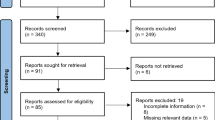Abstract
The structure-activity relationship study of C-10 substituted artemisinin (QHS) derivatives that are used as antimalarial was performed with the RS (rough sets) method. An RS process is a concise nonlinear process, and it has broad application foreground in the data mining of nonlinear life courses. In this work, initially the parameters of C-10 substituted QHS’s derivatives were computed with the quantum chemistry method, and the information table was constructed from the parameters (condition attributes) and biological activity (decision attributes). Based on the analysis of rough set theory, the core and reduction of attributes sets were obtained. Then the decision rules were extracted and the structure-activity relationship was analyzed. As a nonlinear system, RS theory can extract the special relation in the database. It has the advantage of being nonlinear over multiple linear regression (MLR), principal component analysis (PCA), partial least square (PLS), etc., and the advantage of obtaining results with unambiguous physical meanings over artificial neuron networks (ANNs), etc. The result obtained in this study is instructive to the study of pharmacodynamics, resistance mechanism of QHS and development of QHS’s derivatives.
Similar content being viewed by others
References
Dhingra V, Rao K V, Lakshmi Narasu M. Artemisinin: Present status and perspectives. Biochem Educ, 1999, 27: 105–109
World Health Organization. The World Health Report, 1996, 47–51
Advisory Committee on Malaria, MOH. Malaria situation in the People’s Republic of China in 1997. Chin J Parasitol Parasitic Disea (in Chinese), 1998, 16(3): 161–163
Guo Y, Wang J, Chen Z T. Recent advancement in pharmacological effects of artemisinin and its derivatives. Chin J Clin Pharmacol Therapeut (in Chinese), 2006, 11(6): 615–620
Cheng Y H, Li X Y, Zheng S J. Quantum chemistry and structure activity relationship studies of artemisinin and its derivatives. Comp Appl Chem (in Chinese), 2000, 17: 21–22
Kapetanaki S, Varotsis C. Ferryl-oxo heme intermediate in the antimalarial mode of action of Artemisinin. FEBS Lett, 2000, 474:238–241
Zhai Z L, Xiao S H. Mechanism of artemisinin derivant. Chin J Parasitol Parasitic Disea (in Chinese), 2001, 19(3): 182–185
Ziffer H, Highet R J, Klayman D. Artemisinin: An endoperoxidic antimalarial from Artemisia annua L. Fortschr Chem Org Naturst, 1997, 72: 121–124
Pawlak Z. Rough sets theory and its applications to data analysis. Cybernet Syst, 1998, 29: 661–668
Witlox F, Tindemans H. The application of rough sets analysis in activity-based modeling. Opportunities and constraints. Expert Syst Appl, 2004, 27: 585–592
Pawlak Z. Rough sets and intelligent data analysis. Infor Sci, 2002, 147(1–4): 1–12
Tang J G, Tan M S. On finding core and reduction in rough set theory. Contr Deci (in Chinese), 2003, 18(7): 449–452
Lin A J, Klayman F L, Millions W K. Antimalarial activity of new water-soluble dihroartemisinin derivatives. J Med Chem, 1987, 30: 2147–2150
Lin J, Lee M, Klayman D L. Antimalarial activity of new water-soluble dihydroartemisinin derivatives. 2. Stereospecificity of the ether side chain. J Med Chem, 1989, 32: 1249–1252
Nguyen-Cong V, Van D G, Rode B M. Using multivariate adaptive regression splines to QSAR studies of dihydroartemisinin derivatives. Eur J Med Chem, 1996, 31: 797–803
Foote S J, Kyle D E, Martin R K, Oduola A M, Forsyth K, Kemp D J, Cowman A F. Several alleles of the multidrug resistance gene are closely linked to chloroquine resistance in p. falciparum. Nature, 1990, 345(6272): 255–258
Rosenthal P J, Meshnick S R. Hemoglobin catabolism and iron utilization by malaria parasites. Mol Bio Chem Parasitol, 1996, 83: 131–139
Author information
Authors and Affiliations
Corresponding author
Rights and permissions
About this article
Cite this article
Liu, H., Qu, L., Gao, H. et al. Study on the quantitative structure-activity relationship of C-10 substituted artemisinin (QHS)’s derivatives using rough set theory. Sci. China Ser. B-Chem. 51, 937–945 (2008). https://doi.org/10.1007/s11426-008-0098-0
Received:
Accepted:
Published:
Issue Date:
DOI: https://doi.org/10.1007/s11426-008-0098-0




